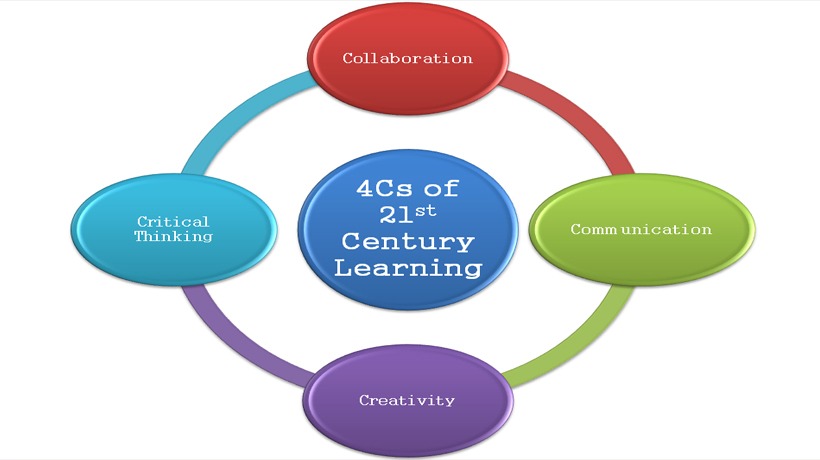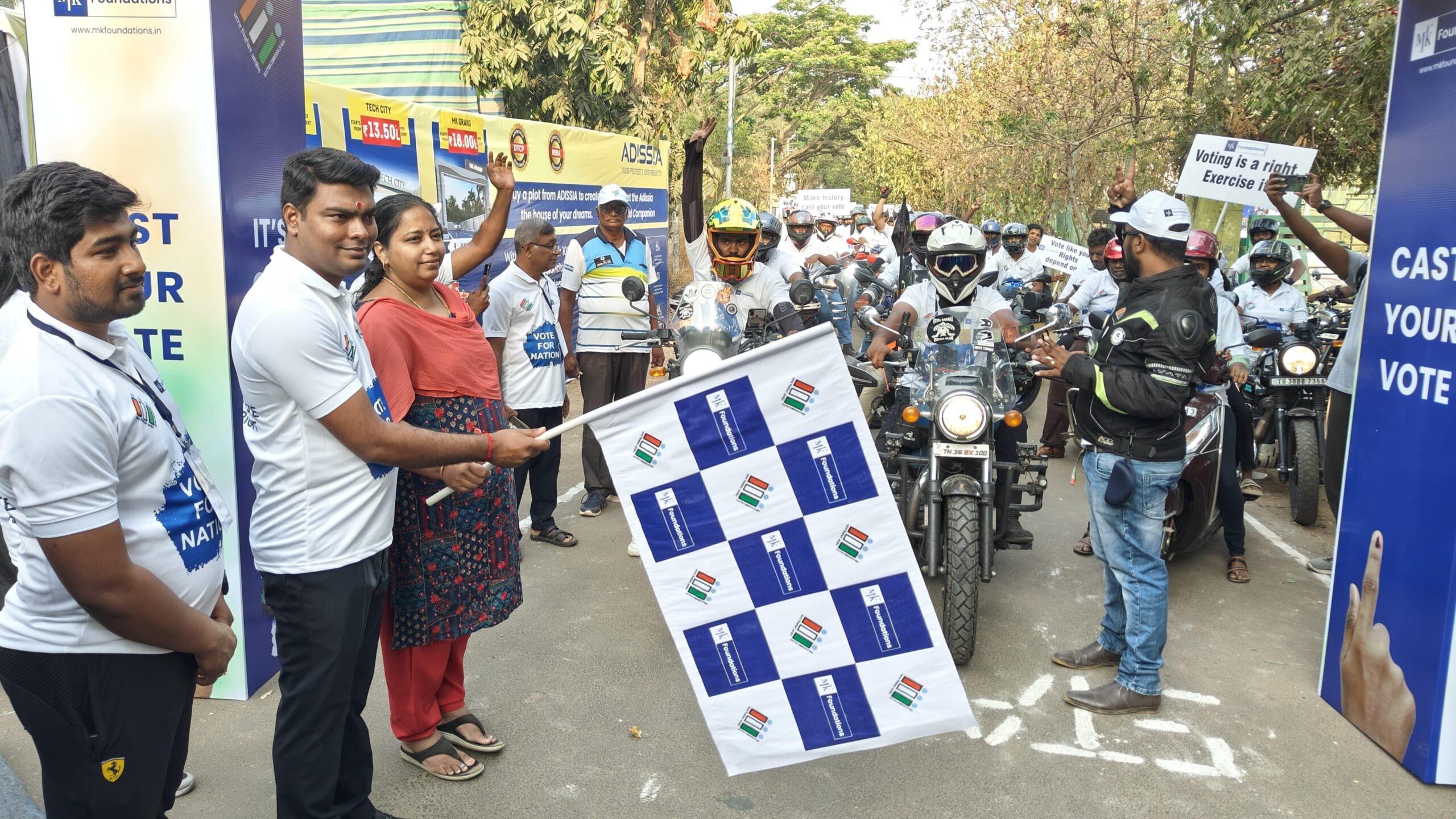Trending Now
- IPL 2024 begins with a bang. First contest between CSK and RCB.
- Election commission allots mike symbol to Naam Thamizhar Katchi
- AIADMK promises to urge for AIIMS in Coimbatore, in its election manifesto.
- Ponmudi becomes higher education minister.
Columns
Transforming Nation Through Education: Cs of 21st Century Skills
![]() October 1, 2018
October 1, 2018
It is a competitive era and every nation needs to gear up its children to be part of the learning journey. Educational institutions and parents have a major role to mould the young minds to learn life skills. Adapting to new modes of learning is inevitable.
Change is a continuous process and inevitable too. No country or no individual can afford to say changes cannot be acceptable. But the challenge is how to change for better at various stages. Nations can continue to transform when every individual believe he/she is not average in all fields including academic field, in the chosen work field or in any activity. Because none is born to be average. But to change for better perhaps one need or create a suitable adjustable system as a flexible design help in self-growth and contribute better.
In the first series on “Transforming Nation Through Education” to be presented by me, sufficient emphasis would be given to Creativity, Critical Thinking, Collaboration and Communication, which is considered as the 4 Cs of 21st century skills. These 4 skills are identified by the United States-based Partnership for 21st Century Skills which is recognized easily as P21. These are identified as the important skills by educational and political leaders in the US in 2016. However, P21 history dates back to 2002.
It is everyone’s desire and dream to be successful in the chosen field. It can happen provided there is a good base to think and work towards it from the school days. Schools can hone up and add a range of abilities to young ones to make them prepare for the present 21st century. This method could be deviating from the traditional way of teaching. In conventional method or time-tested method, emphasis is on scoring of marks by students. But the present requirement is getting skills. It is not that children who learn in the most accepted traditional norm are not successful in certain aspects. But when they are exposed to a bigger world – work place – where there is high competition, Indian students fall short. The shortfall can be addressed through the 4 Cs.
Then the question is how easy or difficult for educational institutions to help students to equip themselves better to face competition or become skilled to be hired in the present century. Of course, it is a big challenge for schools to engage children interestingly and meaningfully as they often get hooked on to and get distracted by digital technology. The other challenge is parents’ expectations from their children. This can be a limiting factor as well as snubbing factor too for learning skills. Hence, it becomes imperative for educational institutions to partner with parents to drive home a point — do not put a capping on learning. Here Rabindranath Tagore’s line comes to mind — “Don’t limit a child to your own learning, for he was born in another time.” How meaningful!
Schools and parents should realize the hard fact that every child is capable and also desires to learn a new thing each day. It is mostly the cognitive level that could vary in each child. Adequate time can prepare a child to align with other. As Venkatesh Koravadi, TREAMIS World School put it – there is nothing like ‘stupid child.’ A child should not be snubbed. There is a requirement of schools to ‘own responsibilities’ of not just academic works of children but their comprehensive holistic development. While some can learn in a group, some may need special attention. For instance, Bengaluru-based Sawaldas Jethani, Founder of Chrysalis High schools, supports the idea of ‘Individual support program’ for each child. This could be achieved through engaging a child through an extra hour of class where a teacher can bridge the gap. Having said so, parents’ huge role to work with teachers and school cannot be ruled out!
Parents need to help children learn and rise above than merely providing electronic gadgets or tools of learning. As automation such as robotics, artificial intelligence and internet of things have convinced that future will be different. This demands the school curriculum need to align with the future expectations than allowing children being streamrolled by digital tools. Curriculum could act more like a guide to navigate and inoculate the skills through meaningful activities where children self-discover, works in team for real time problems. However, Bengaluru-based Devi Sudhir, Prakriya School recommends to include two more Cs – Community building and Containment in choice. As these will connect academics and social. Otherwise a newer manipulate world will evolve! How true and sad?!
As the focus for 4Cs is required with rapid invention replacing the others. This would expect people to become nimble and adaptable to unlearn and learn. The earlier mechanism of just learn to memories and reproduce is diminishing. Then the question is will the education like STEAM (Science, Technology, Engineering, Art and Mathematics) change the teaching and learning among children. STEAM projects that harbor real-time knowledge through team projects is expected to help children acquire 4Cs. As each group projects helps to sieve and assess information. As Venkatesh Koravadi put it – the bottom line is to emphasies on learning process not even learning outcome! In order to make this happen Devi Sudhir believes that the teachers need to play a role of facilitator. By doing so, the authoritarian figure is dissolved.
The informal set-up where teacher acts like a facilitator is to move away from being labelled as smart classroom. However, the facilitator need to think on feet and be sensitive towards each child. Devi Sudhir cautions of neglecting content which is required from high schools onwards as activities should not be about just tossing or collecting ideas or smart tag. There should be mechanism to connect ideas to market to consumer. Remaining two Cs could help to bridge the technology and community through meaningful dialogue. This to happen for country like India might demand for vernacular languages. But the question is will schools open to teach and allow children to participate in mother tongue. However, Sawaldas Jethani differs in this aspect. He mentions three challenges, firstly, children move from one state to another (or oversea) for education (or job). The underlying question is it fair to expect from a child to learn so many languages. Secondly, which language to teach in cosmopolitan schools? And third, will parents admit their children to vernacular emphasis schools. Understanding that education should move from clerical to thinking structure. A common language like English could bridge the communication mode.
Now let’s explore the other possible bottle neck problems associated with the future skills. As one would have observed that kids in per-school have flexibility of pick up different things like piece of community model or museum model to assemble to do an activity. But post pre-school it could enter to curriculum mode and discipline mode. As Venkatesh Koravadi put up – there is need to shift focus from mandatory discipline to self-discipline. However, Sawaldas Jethani appreciate the idea but differ as the examination structure still relies on pen and paper mode.
Understanding that inspite the board examination is only in tenth standard but the schools need to adapt and move into curriculum mode. As Devi Sudhir pinpoints – competitive examinations are cause for schools to be pushed into curriculum mode. As there are no check points for penetration of several competitive examination.
All these boils down to – it’s high time for parents and schools to help children to create a direction by collaborative approaches like working with scientist (of all areas). In order to make this happen, parents and teachers could play all the role such as sage on stage to guide on side. This way children can be made productive global citizen.
Let the first article be a movement to help children to spend atleast twenty percent of time in activities that are related to 21st century skills. A movement to make STEAM as an inclusive education.






















